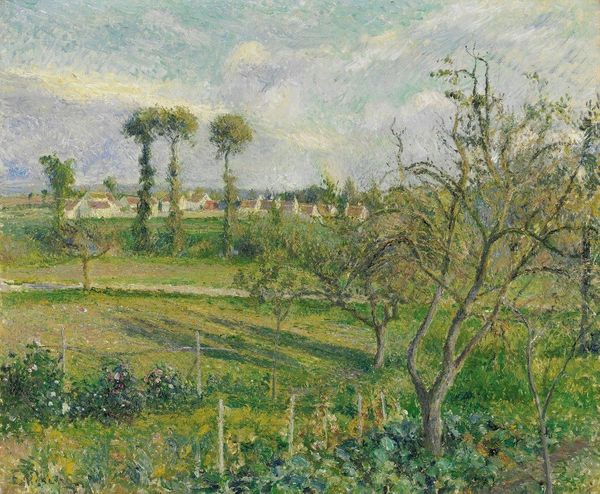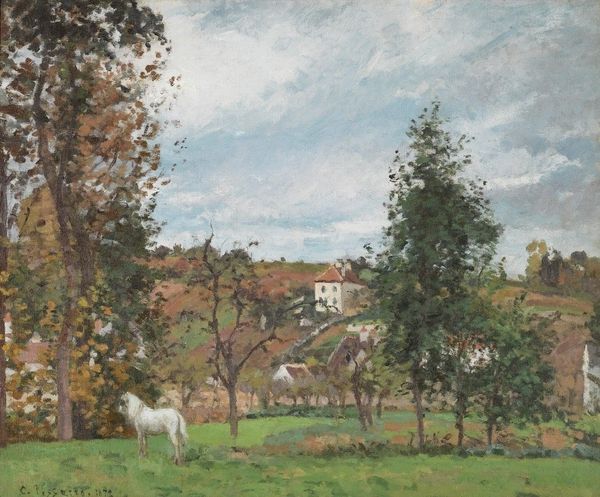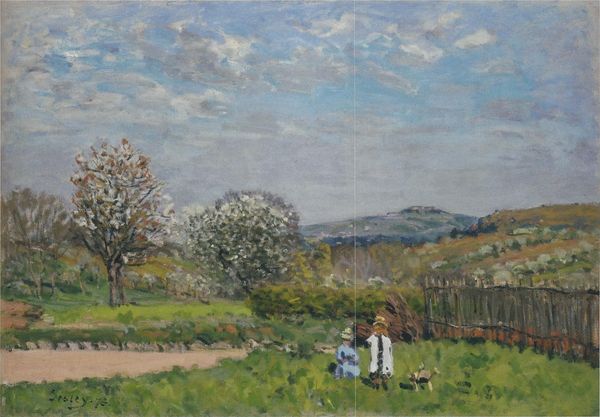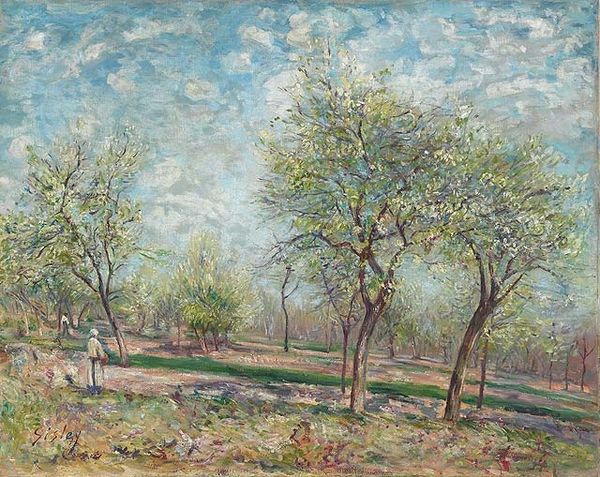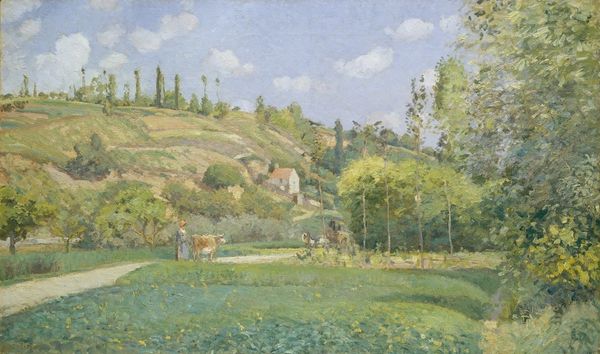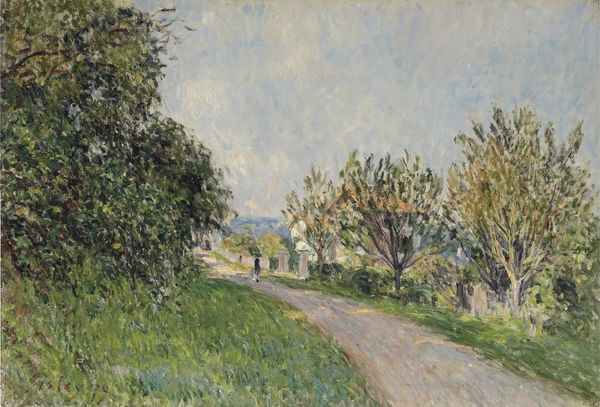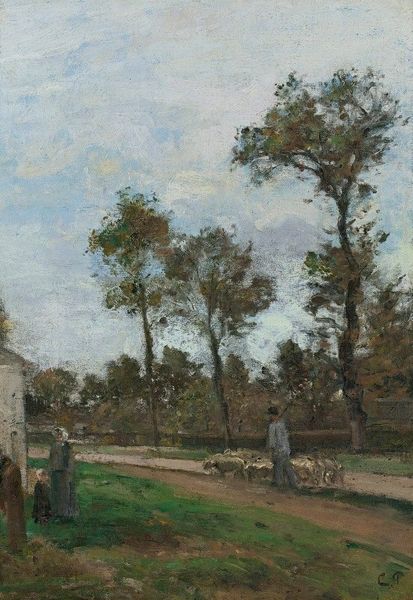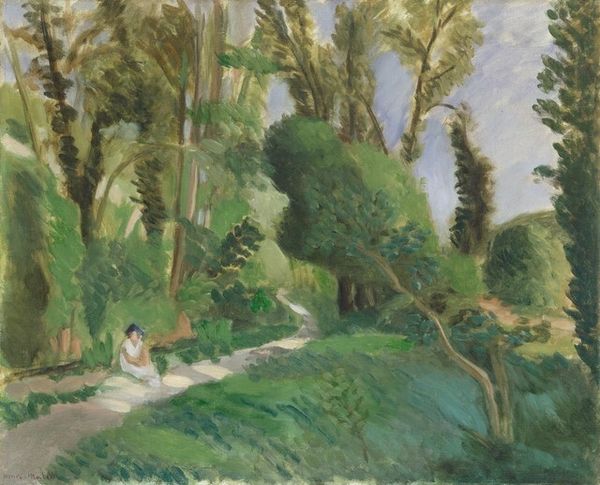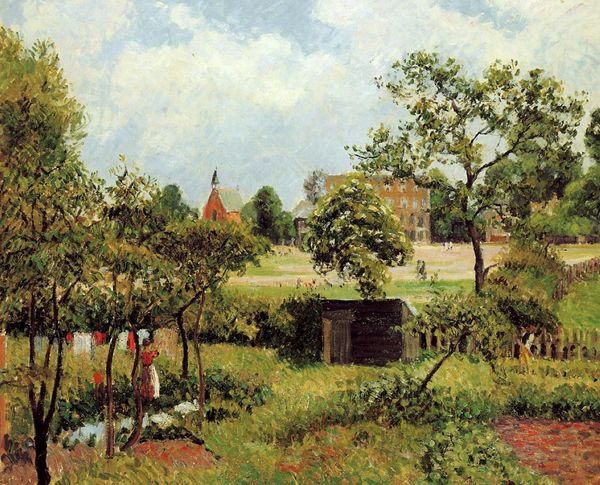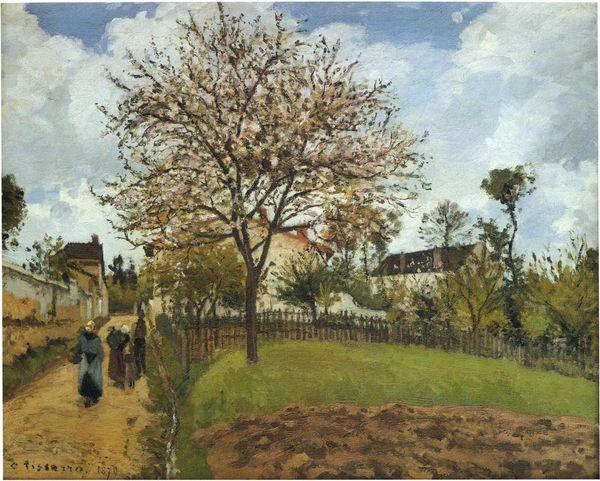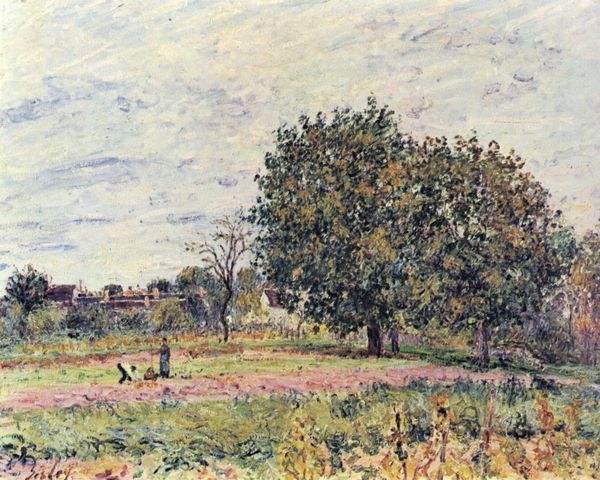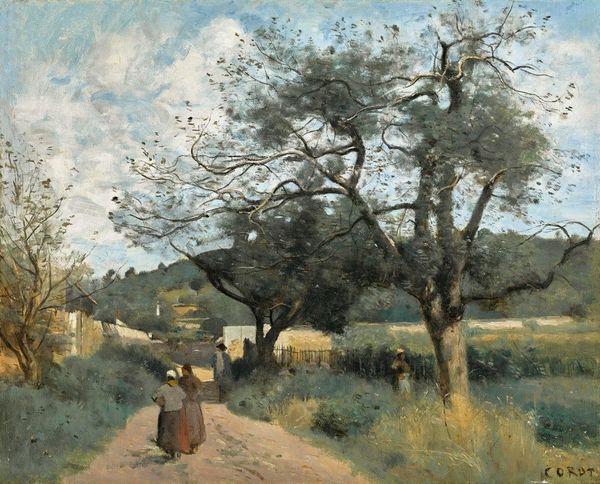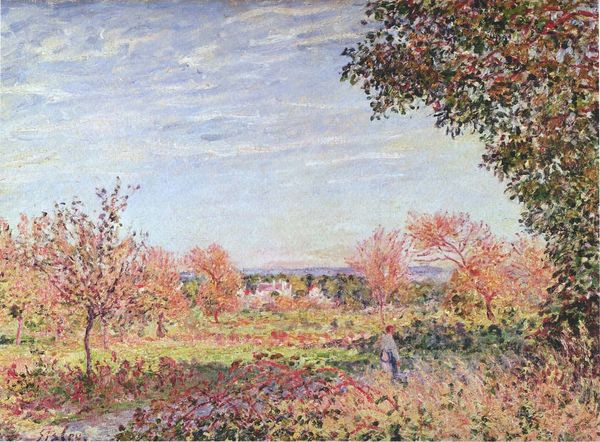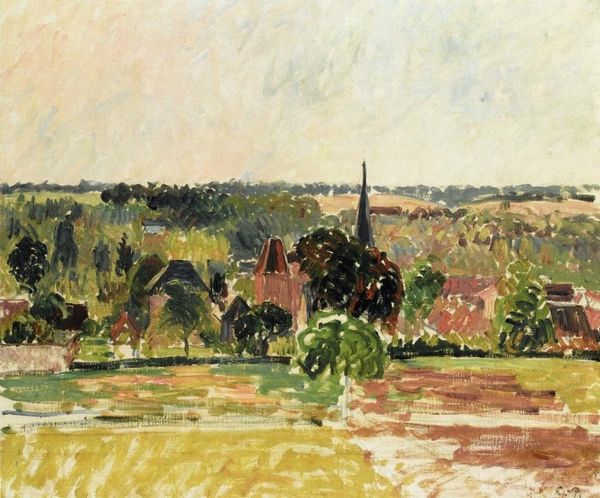
Copyright: Public Domain: Artvee
Curator: Here we have Alfred Sisley’s "La Route de Verrières," painted in 1872. It’s a quintessential example of Impressionist landscape painting. Editor: It immediately strikes me as a scene steeped in a particular relationship to labor and leisure; the dusty road speaks to work and transportation, while the figures strolling hint at bourgeois recreation. Curator: Absolutely. Sisley’s placement of this road, almost bisecting the canvas, directs our gaze through various elements – the vegetation, figures, and culminating in the distant landscape. Let's delve into Sisley's revolutionary brushstrokes and use of light. Editor: Right, because how else would a nineteenth-century petit-bourgeois painter capture this particular historical moment, without considering its ties to the burgeoning art market and middle-class consumption? This wasn't painted with some pure intention; the canvases, the paints themselves are products of specific production methods. Curator: And these fleeting impressions, so central to Impressionism, arguably provided a powerful new visual language for experiencing modern life at the time. How the materiality captures ephemeral effects through oil-based techniques cannot be overlooked. Editor: I concur, this moment is caught and crafted utilizing raw materials to create texture and to construct class identity through leisure. I'm not willing to see beyond Sisley’s means to produce this scene. Curator: It's that push and pull between social positionality and environment that defines so much of the art historical narratives around impressionism and those attempting to capture and critique such phenomena. Sisley manages to evoke both at once in this piece through light, form and perspective. Editor: Yes, understanding the commodification of leisure and landscape remains central. As well as who can participate and its material conditions. Curator: In considering those ties to leisure, it would be valuable to look at the implications in broader movements in post-industrial life and modern work forces, or lack thereof for some. This work feels charged with class tension to me. Editor: Certainly. The context in which these materials are conceived reveals a great deal about production value and those positioned to consume and view this material artwork. Curator: Looking closely at “La Route de Verrières," both the act of observing its beauty and deconstructing it adds new depths to how we appreciate this vista today. Editor: Precisely. Understanding the means of creating the context that led to that artwork ensures a fuller viewing in any collection.
Comments
No comments
Be the first to comment and join the conversation on the ultimate creative platform.
